 Materials
Materials
1. Introduction
Differing requirements on printed circuit boards make the use of differing substrate materials necessary. Especial emphasis is increasingly being put on the reliability of printed circuit boards. For many standard applications the classical FR4 material is sufficient, maybe with improved thermo-mechanical characteristics. However, at high frequencies for instance, other materials have to be used. This technology information sheet should provide you with a basic overview of the types of material commonly available on the market, together with their fundamental characteristics, to make it easier for you to choose the right material for your application.
2. General characteristics of laminates
All of the basic materials mentioned, which are used at CONTAG, comply with the current versions of the following international standards:
| Material | Standard |
|---|---|
| Base material for rigid circuit boards, 1 and 2 sided, multilayer | IPC-4101 |
| Base material for HF applications | IPC-4103 |
| Laminated copper films for flexible printed circuits | IPC-4204 |
| Flexible adhesive coated films for flexible printed circuits | IPC-4203 |
The characteristics of the base materials can be divided into mechanical, electrical and thermal properties. Apart from electrical characteristics in part needed for special applications, the thermal characteristics mainly determine the usability and reliability of the material.
Thermal characteristics: The key parameters are less the glass transition temperature Tg, but rather the delamination time at 260°C and 288°C, the coefficient of thermal expansion (CTE) in the X, Y & Z axes, and susceptibility to thermal cycle tests. The increased soldering temperature for lead-free solder means an increase in the thermal stress on the printed circuit board, which increases the danger of cracked sleeves, corner cracks, copper lifting and delamination.
Particularly the reliability of printed circuit boards in automotive applications is increasingly checked using cyclical temperature tests. Typical conditions for this are -40°C to +125°C / >500 cycles or -40°C to +140°C / 1000 cycles. This performance is only provided by materials with limited expansion along the Z axis, in other words with a low CTE (z).
While the Tg can only serve as a guideline for a permanent thermal stress of the printed circuit board (approx. 20°C - 25°C below the Tg), the other characteristics mentioned, especially the CTE(z) are the relevant values when considering the reliability of the circuit. "Modern" FR4 substrates using an FR4 resin system have these characteristics, but only have a Tg of 140°C - 150°C.
Electrical characteristics:
- Dielectric constants (related to a defined frequency, mostly specified at 1 MHz, 1 GHz and 10 GHz)
- Loss angle (related to a defined frequency - see above)
- Proof voltage
- Resistivity
- Surface resistance
- CTI (Comparative Tracking Index)
- CAF resistance (conductive anodic filament - electromigration between vias)
Mechanical characteristics:
- Adhesion of the Cu foil
- Bending strength
- Elasticity
Other characteristics:
- Water absorption
- Density
Do the base materials conform to RoHS?
All of the common materials on the market comply with the RoHS/WEEE specifications, without restriction. In addition to this, there are also genuinely "green substrates" which completely do without halogens as flame retardants. These also have a very good thermal performance, but could not get established as a standard material owing to significantly higher costs and increased tool wear when drilling and milling.
3. Values for a few selected typical groups of materials
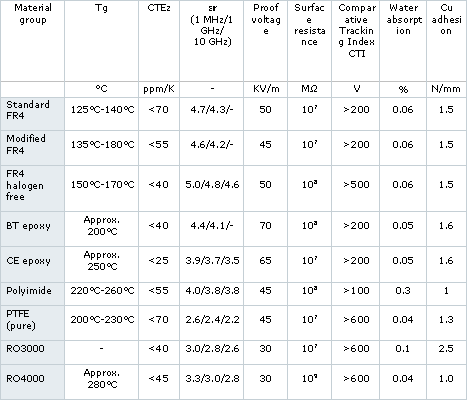
4. Example materials for various requirements
Standard applications
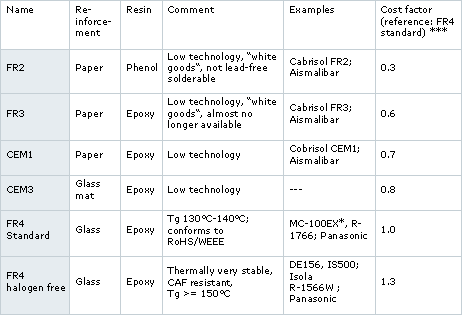
Use at high temperatures
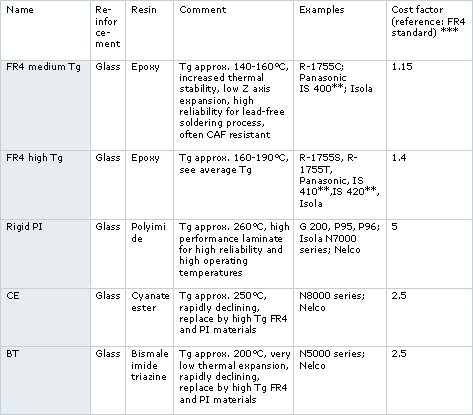
Controlled impedance & HF applications
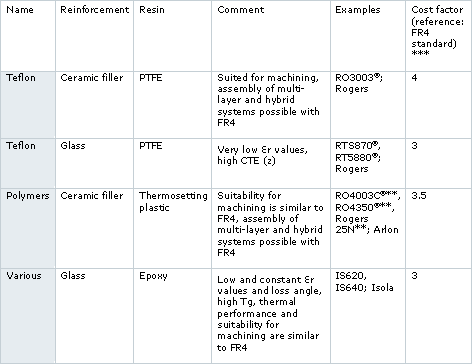
Flexible applications
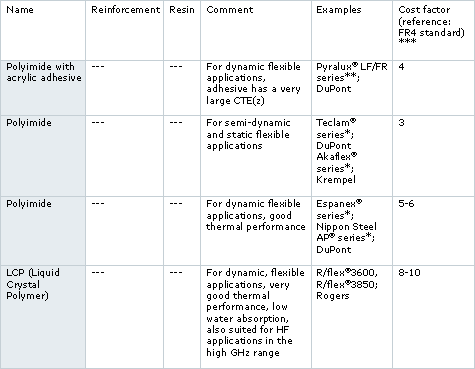
*) Standard material at CONTAG **) Various thicknesses in stock ***) The factors always relate to costs in series production. Material orders for small quantities with short delivery times can lead to delays at CONTAG.
5. Summary
There is no universal base material for printed circuit boards. Whether for standard applications, HF, high temperature or other applications: A large number of substrate types is available.
For more detailed technological questions on printed circuit boards, please contact our CONTAG-team (+49 30 351 788 - 300 or team@contag.de).
Version: B
Your personal contact
+49 30 351 788-333
team contag.de
contag.de











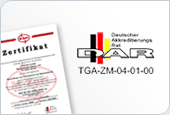
 Technology Information "Materials"
Technology Information "Materials"